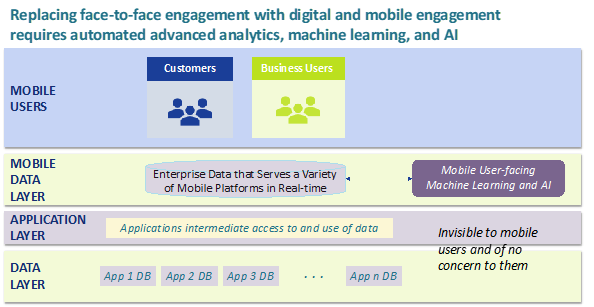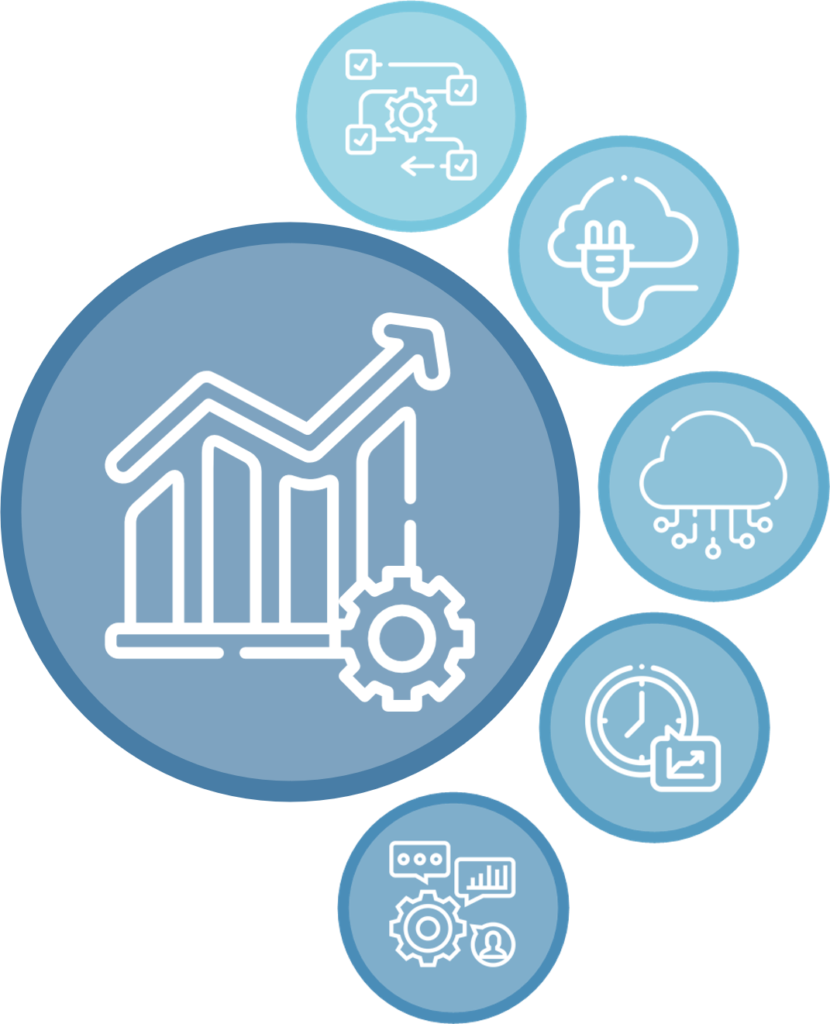by Rick Skriletz –
Digital is reshaping markets, industries, and customer behaviors. Meet this challenge by creating outstanding customer experiences and digitalizing business operations like a startup.
“Digital business is daunting specifically because a company’s prior success does not provide a recipe for future success. The company is embarking into uncharted waters. That’s not the mandate of a strategic initiative: It’s a job for a startup.”1
Existing companies think startups have it easy. After all, a startup has no operating capability or legacy operations, so it can make its business operate however it wants. On the other hand, a startup first searches for capital, then conserves it as best it can while striving for market acceptance of their product or service and profitability.
For an existing business, this is more than a case of envying the (perceived) greener grass of startups. While there are benefits to starting a business unencumbered by existing operations, existing businesses and startups both face the challenge of attracting, acquiring, and serving customers. Existing businesses have the benefits of a customer base and a reputation to build from, which startups lack, and they can use startup thinking to use these to their advantage.
Digital Experience: How Customers and Workers Rate a Company
The trick for an existing business moving to digital operations is to think like a startup, engineer desirable solutions, and use advantages at hand. The first step is to see the world as it is.
Digital technologies are reshaping the world. As Forrester states2, “Eight in 10 consumers will see the world as ALL digital [and] Consumers have much higher expectations that digital experiences work well.” In other words, customers choose to interact with businesses using digital channels, expect them to work without problems, and want them to be engaging.
For customers, it’s all about the digital experience. Gen Z and subsequent generations expect digital as an important part of the world of businesses. Look at young people and observe how digital affects their lives as consumers. Digital entered their lives at an early stage, and how they adapted to it is informative.
Generation Z, born between 1997 and 2012, came of age with smartphones, which debuted when they were infants, and according to and infographic from Concordia St. Paul3 on average:
- Use five screens (smartphone, TV, laptop, desktop, and tablet) regularly
- Spend 10 hours a day on an electronic device3
People today increasingly live and breathe digital. As consumers, they understand and prefer digital channels, and as workers they expect digital tools to be like those they use in their lives.
Startups recognize this and begin by determining how best to engage and satisfy customers’ and workers digital expectations. Existing businesses need to do the same.
Create an Outstanding Digital Experience
The challenge for an existing business is to not simply provide information to customers as an extension of customer service. Instead, businesses need to think holistically about customers, create engaging digital customer experiences, and reshape business operations to deliver the desired experience, including an outstanding digital worker experience, like startups do.
Begin by determining customers’ expectations and analyzing their implications as the core of the digital experience you want to create. Think of the digital experience as the storefront and service portal for the company. After all, Uber would simply be a livery company without the comprehensive automation and worker experience behind its digital interface.
Amazon, from its beginning in 1994, has been the standard for its customer experience focused on the customer. Amazon grew its website from books and recommendations to encompass its growing offerings, customers’ order histories and charity preferences, and business storefronts, all to expand the digital experience for customers and merchants.
As smartphones and cellular connectivity grew data and processing capabilities, mobile devices turned into handheld computing platforms that toppled the dominance of desktops as access to browser-based access to internet websites. “The rise in the percentage of web traffic on mobile has had an immense impact on desktop web traffic … The very first time the percentage of web traffic on mobile exceeded that of desktop came in November 2016."4
In addition to websites, Android, iOS, and virtual assistants like Amazon Alexa, Apple HomePod, and Google Assistant are digital platforms, and the mobile apps they support are new elements included in customers’ digital experience. Where websites need to be compatible with a few standard web browsers, producing a cohesive experience across multiple digital platforms adds technical complexity that affects digital experiences. Amazon’s mobile app, for example, does not provide the same capabilities their website does.
The digital environment, which began as accessing the internet, is now much more complex, including mobile devices, virtual assistants, wearables, and social media platforms. Supporting multiple digital platforms with different capabilities to provide a consistent digital experience presents a challenge to digital engineering.
Engineer Outstanding Digital Experiences
A startup can create the digital experience it wants without being encumbered by existing applications or business operations. Unfortunately for an existing business, this is not the case.
I described the evolution of data and applications in existing businesses here, so I won’t rehash it here except to note that digital users “don’t care what happens behind the glass of their mobile device. They expect complete and accurate data to be delivered to their device instantly.
“More than that, their experience with Amazon and other customer-centered businesses have trained them to expect to drop from one device to another as they interact with a company digitally.”

A digital experience needs accurate data and analytics that respond in real time to customer or worker digital events. It also needs the ability to initiate transactions, which is a challenge for data operations that are centered on distributed and inconsistent applications.
Creating outstanding digital experiences requires adhering to three principles: think digital first; utilize consistent data and rules; and automate advanced analytics (see the sidebar for more). The ramifications of these principles affect how engineering a digital experience is done.
Basically, the principles for engineering a data and rules processing infrastructure that delivers an outstanding digital experience is changed from practices companies use in their existing applications and analytics:
- Digital is dynamic, so engineering must be as well. When customers or workers engage with a company digitally, they drive the timing and content of the interaction. Changes in their needs, influences, and expectations affect their quality of digital experience, so companies will need to adjust and improve their digital presentations quickly to keep them engaged and sustain their interest.
- Digital data must be consistent, and rules must be consistently applied, everywhere. This is more than a truism; it is foundational because workers and customers need to have the same information at the moment they interact. The engineering choice is this: creating a consolidated data store that serves customers and workers in real time or continuing with independent, inconsistent data stores in siloed applications. The first option eliminates latency, ensures consistency, and is the recommended approach.
- Digital requires automated advanced analytics. Automated analytics are needed to personalize interactions, such as recommendations and offers, in real time. Engineering needs to acquire commercially available data because, as Forrester reports “75% of their efforts to create automated, personalized engagement won’t meet ROI goals due to inadequate buyer insight.” Then engineering needs to develop and automate analytics to support digital interactions because, as McKinsey states5, “data about customer interactions can be used to predict both satisfaction and the likelihood that a customer will remain loyal, bolt, or even increase business.”
Finally, analytics and algorithms can lose their efficacy or produce unexpected or out-of-control results, so wherever an analytic is automated, there also must be automated monitoring of its results. This additional analytic acts like a manager that oversees work and accepts its results.
- Digital is driven by events and data, not applications. Before digital, companies controlled the flow of data, structuring its capture with systems of record applications, each supporting its particular business function. Digital events don’t allow this form of control. For engineering, this means application control is replaced with digital events and interactions. In effect, systems of record are replaced by a single event stream of record that is analyzed and processed in real time. Every action is placed in time and sequence and processed independently.
Thinking like a startup recognizes this core digital requirement: “As businesses become digital, the need to understand customers, interpret digital interactions to understand their interests and behaviors, and entice them with information and offers in real time demand increasing automation.”
Three principles for creating an outstanding digital experience

2. The consistent data and rules principle
Ready-to-use, complete, and accurate data needs data and rules applied consistently instead of inconsistently as in many applications in established businesses. The data and rules principle is this: digital data must be complete and correct and rules must be consistently applied wherever they are used.
This principle reinforces that incomplete or incorrect data will not lead to a trustworthy digital experience, and inconsistent application of a business rule is a contributing factor. Layers of processing to access, synchronize, and correct data used to validate data and eliminate inconsistencies add latency to digital interactions and counter the digital first principle.
1. The digital first principle
Digital is reshaping the way we work with companies and live. As the company’s storefront and service portal, the digital first principle is this: the digital experience must be holistic in how it engages and interacts with customers. It should not require customers to sign on to different websites or apps to accomplish their objectives. And a customer should be able to resume from the point where they left off when they do switch from one device to another.
This principle recognizes digitals pervasive presence, accepts that it will be the primary or only means of interacting with many customers. Outstanding digital experiences need ready-to-use, complete, and accurate data and require very low latency in their interaction’s responsiveness.
And the worker experience should be treated the same.
Adhere to this principle and you will be well on your way to thinking like a startup.
3. The automated advanced analytics principle
Providing a more than static information requires decisions, such as making a recommendation, extending an offer, or answering a question for a customer. Automated analytics perform these activities quickly, at scale, and without involving people. The automated analytics principle is this: use predictive, graph, time series, and other advanced analytics to automate interactions and enrich the digital experience for customers and workers.
Analytics and algorithms can lose their efficacy or produce unexpected or out-of-control results, so an essential corollary of the automated analytics principle is this: wherever an analytic is automated, there must be another analytic monitoring its results. This automates the role of a manager that oversees work and results. Include it whenever automated analytics are deployed.
This principle is an integral, powerful, and increasingly important part of the digital world. It must include automated monitoring and management.
A note on applying AI: AI needs to be monitored carefully, especially regarding what it needs to understand when it executes a function. Testing AI’s ability to understand is an important area of AI research: “It’s simple enough for AI to seem to comprehend data, but devising a true test of a machine’s knowledge has proved difficult.””9
For now, deploying AI that is ‘augmented’ intelligence or ‘applied’ intelligence is more useful for digital business interactions than the more ambitious and abstract ‘artificial’ intelligence.
Refresh the Digital Experience for Changing Tastes / Behaviors
The biggest difference between startups and established businesses is in how they treat digital experiences once they are in place. Customer behaviors, competitors, and markets can change quickly and can require digital experiences to adapt quickly. Established businesses think of the digital experience as another channel used in their business. Startups, however, obsess over them.
For a startup, the digital experience is their only customer channel. They monitor its customer engagement. They A/B test colors, formats, and content to see if or when one provides better outcomes than the other. They constantly look to entice, engage, and excite customers. Every business needs to do the same because digital is becoming the preferred or predominant mode of interaction for an increasing number of customers and workers.
There is an example of an established company that operates in this manner. Disney Parks provides guests visiting Disney World or Disneyland digital experience and capabilities that engage guests, optimizes park operations, and improves business outcomes. The effort Disney Parks expends keeping their digital experience fresh and their brand’s digital awareness high is significant and demonstrates their commitment needed to succeed with digital.
Think Like a Startup and Create Outstanding Digital Experiences
To summarize, the steps required to create outstanding digital experiences for customers and others are few, but challenging:
- Think ‘digital first’ and focus on digital like it’s your only channel to serve customers. Eventually digital will become the predominant way customers will find and interact with your company.
- Engineer holistic digital experiences for customers and workers. This will require data and rules engineering to transition from application-centric operations support to digital customer- and worker-centric ones.
- Automate, automate, and automate some more. Gather data, supplement and enrich it, develop advanced analytics for making decisions, and automate them to support real time interactions. Always include analytic monitoring and management.
- Obsess over the digital experience as if it is only customer channel. Monitor its customer engagement. A/B test colors, formats, and content to see if or when one provides better outcomes than the other. Constantly find ways to entice, engage, and excite customers.
Digital operations require different engineering approaches than application-centric support for business operations businesses have today. RCG designs, engineers, and builds outstanding digital experiences and automated analytics and can help you with yours.
Works Cited
1. MIT Sloan Management Review (2019, Jan 11) "Act Like a Startup" Retrieved from https://sloanreview.mit.edu/article/act-like-a-startup/
2. Forrester (2021, Oct 26) "Predictions 2022: This Is A Year To Be Bold" Retrieved from https://www.forrester.com/blogs/predictions-2022/
3. CSP Global "Generation Z in the Workforce" Retrieved from https://online.csp.edu/resources/infographic/generation-z-in-the-workforce/
4. Oberlo "WHAT PERCENTAGE OF INTERNET TRAFFIC IS MOBILE?" Retrieved from https://www.oberlo.com/statistics/mobile-internet-traffic
5. McKinsey & Company (2021, Feb 24) "Prediction: The future of CX" Retrieved from https://www.mckinsey.com/capabilities/growth-marketing-and-sales/our-insights/prediction-the-future-of-cx

